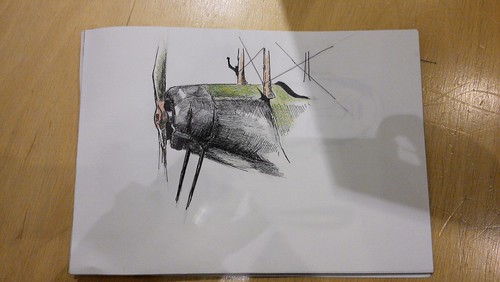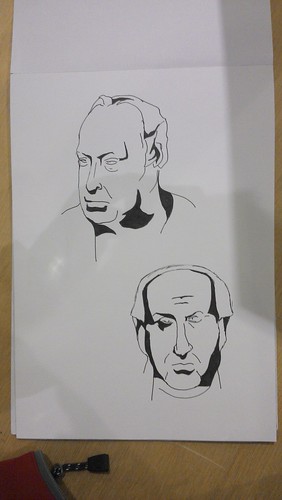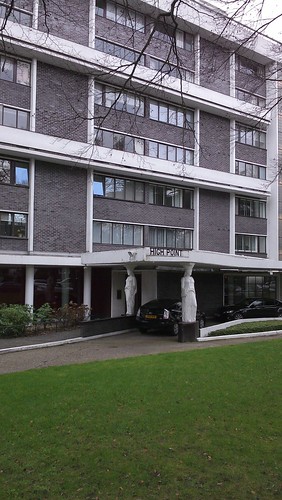

About a week ago I took a picture of a multi-storey block of flats in Highgate. Looking otherwise ordinary (well, "ordinary" for Highgate which is quite a nice area) it still was an instant eye catcher because of its caryatids (female figure pillars) supporting the entrance canopy:

They looked so odd it must have been done of purpose, but I didn't bother to check until I received a comment on Flickr with a link to the story, and what I learned seemed exciting enough for a blog post.
The architect, Berthold Lubetkin, was actually a prominent modernist well-known in Britain (his architecture group was the first modernist one to be granted a public commission). Originally from Tbilisi, he left Soviet Russia in 1920s with his parents and got to London in 1931.
Despite the emigration Lubetkin retained "strong left-wing political allegiances". Developing as an architect outside of the USSR and Eastern Europe possibly saved his life (his parents residing in Warsaw died in Auschwitz during the war), but there was also something pathetic and also unfortunate about bearing his views and enjoying the fruits of the capitalist society. It was a bad timing - even when post-war Britain started to turn into a welfare state, it was also the beginning of the Cold War: one of earlier Lubetkin's housing projects named after Lenin was then renamed to Bevin Court after the anti-communist Labour Foreign Secretary. Desperate, Lubetkin buried a statue of Lenin removed from the entrance under the famous staircase.
Lubetkin's houses got quickly occupied by middle class residents rather than by workers who were supposed to be "liberated" by the modernist movement. Particularly the High Point II block a picture of which I snapped boasted too good location on a top of the hill even for then-smaller London, and his biggest work - a master-plan for miners' town Peterlee was rejected for being too complex and expensive (even for a constructivist project) for working class accommodations.
Soon he became disillusioned and retired relatively early in 1950.
Lubetkin's legacy is still celebrated - most of his work is protected by listing. There is also an annual Lubetkin Prize in architecture.
So sometimes taking pictures teaches you something new.
***
Back to Highgate, you can walk the area with a widget below: